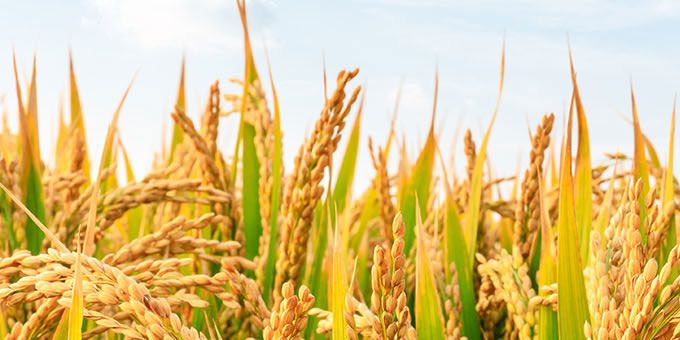To sustainably feed the world's growing population, we must embrace the next agricultural revolution and find new ways to innovate our food system.
 Kellogg Company and NewEdge Inc: Why Innovation and R&D Must Drive Global Food System Transformation
Kellogg Company and NewEdge Inc: Why Innovation and R&D Must Drive Global Food System Transformation

Article from | Kellogg Company
Globally, both the public and private sectors are working together to achieve United Nations Sustainable Development Goal No. 2 – ending hunger, achieving food security, and improving well-being and sustainable agriculture by 2030. Dr. Nigel Hughes, SVP Global Innovation and R&D, Kellogg Company & Dr. Pam Henderson, CEO of NewEdge, Inc., share strategies on how innovation and R&D teams can transform our global food system in a new blog post.
The world's population is projected to reach 9.7 billion by 2050, and with it will come an increased demand for food. The United Nations estimates that the world will need to produce 60% more food by 2050 to keep up with population growth. However, doing that within the boundaries of what our planet can sustainably grow presents an existential challenge.
Driving the efficiency of our current food production practices isn't the answer. The agri-food industry is responsible for around 25% of greenhouse gas emissions and 70% of freshwater consumption and is significantly over-reliant on animal foods.
To sustainably feed the world's growing population, we must embrace the next agricultural revolution and find new ways to innovate our food system.
Sustainable Food as an Innovation Opportunity
The food system's impact on climate change and biodiversity is just beginning to receive the recognition it deserves and needs. We all must think differently to improve it, working with nature rather than exploiting it. For food companies, this can't simply be delegated to a sustainability department. These are significant challenges but equally attractive and exciting innovation problems to solve. At its very heart, impacting the food system is an innovation opportunity.
When we apply Opportunity Thinking®, we combine a view of the needs in the market, the value propositions that can be created through technology and business models, and the conditions and trends that bring these together, and we can begin to unlock solutions. The food system is a significant opportunity: the need is profound, the value proposition of food security and independence is worth working towards, and the conditions of climate change and water scarcity are prime for transformational innovation.
Sustainable Food as an opportunity for Experimentation
Building the right value webs throughout the system is essential to drive meaningful change. Today's system is complex, and there is a myriad of stakeholders with vested interest in its success. The challenge has been addressed by convening large ecosystems of influencers, observers, and participants, but the result is often more discussion than action. While we must work together and leverage one another's strengths and roles, too many "cooks in the kitchen" will hinder innovation and keep us from scaling sustainable foods globally.
Changes to large-scale food systems require innovation teams to be at their best, experimenting with new approaches in closed systems that provide controlled environments before scaling those solutions.
A great example of a closed loop experiment is vertical farming in the UAE, allowing year-round production without using fertilizers and pesticides at a smaller footprint than traditional farming. Being in cities close to where people will live, it's fascinating to consider the opportunities for access and reduction in food waste they provide.
Sustainable Food Requires Collective Solutions
No single company or actor in the system can solve the challenges alone. Stepwise improvements will come through new thinking and partnerships to find collective solutions. We must revisit our relationships throughout the system and work interdependently toward win-win solutions.
Take, for example, Kellogg rice sourcing programs. As part of its Better Days Promise – environmental, social, and governance (ESG) strategy, the company created a closed system experiment to pilot Kellogg's Ingrained™ program to help Lower Mississippi River Basin rice farmers reduce methane from the North American rice ingredient supply chain.
Kellogg provides training opportunities in irrigation management, nutrient management, and soil health to support farmers' transition to new practices, rewarding farmers per ton of GHG abatement their new methods achieve. Feedback from participating farmers will shape and improve the program's implementation in future years.
The Case for a Food System Innovation Coalition
Innovating for the future food system must be focused on more than just the planet. It provides an opportunity for companies to re-evaluate where there is opportunity. A necessary pivot is for these companies to explore what is competitive versus pre-competitive. When companies come together pre-competitively to innovate on sustainability, we unleash and scale their collective innovation capabilities to address a problem shared by all. A rising tide will raise all boats! We must find ways to create opportunities for everyone within the system to generate the scale of change needed.
We believe that the largest food companies are those capable of creating transformative innovation at scale in our global food system. They have the resources and expertise to take an experimental approach within a sufficiently open/closed system, with a smaller set of actors to see what works and what doesn't. In this way, we will transform sustainability aspirations into reality.
The content & opinions in this article are the author’s and do not necessarily represent the views of AgriTechTomorrow
Comments (0)
This post does not have any comments. Be the first to leave a comment below.
Featured Product

